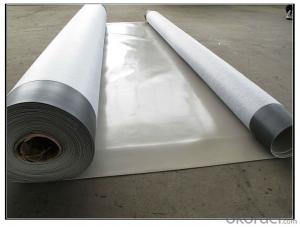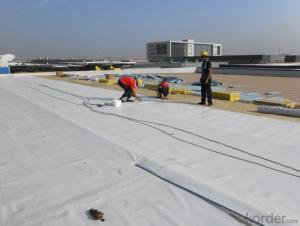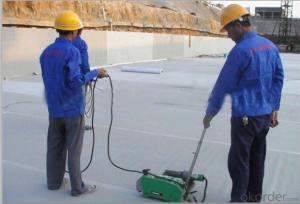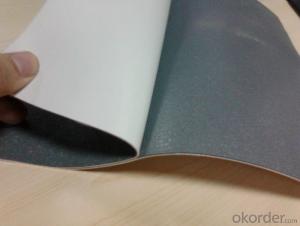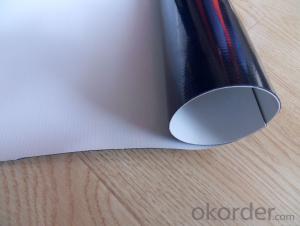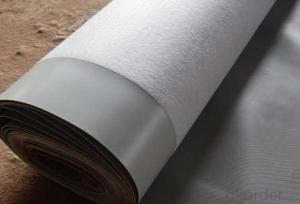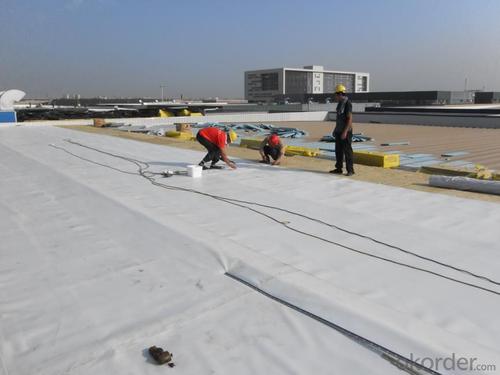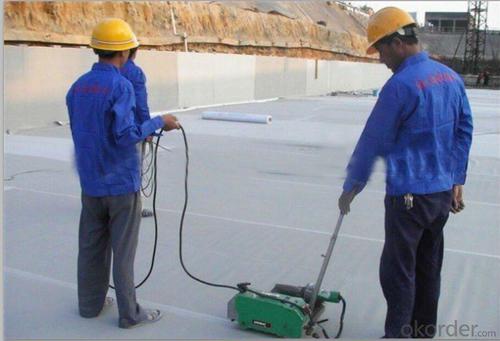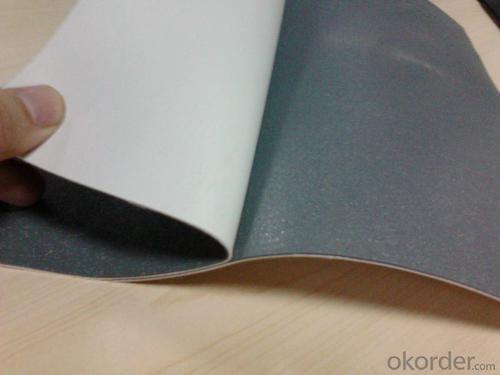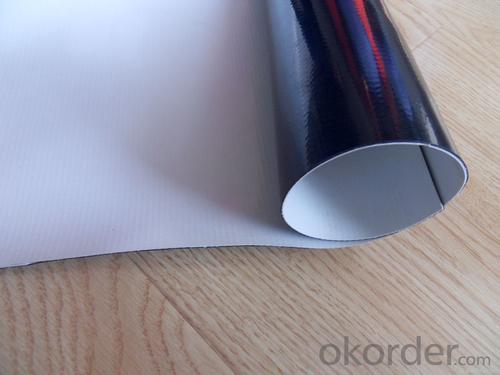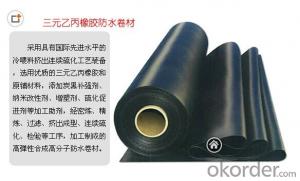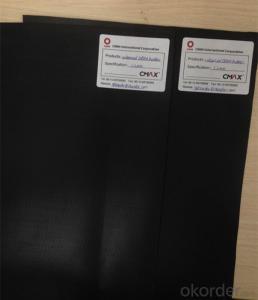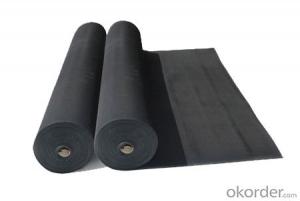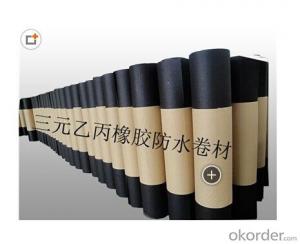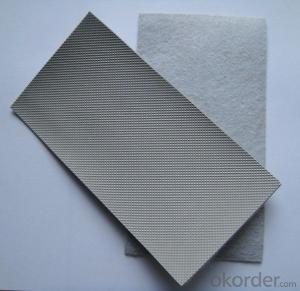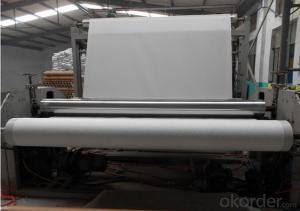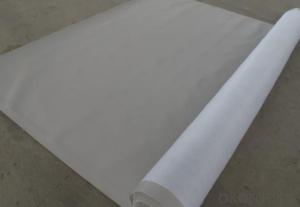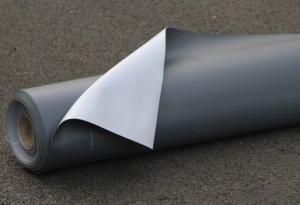PVC Waterproofing Menbrane for Roofing Construction
- Loading Port:
- Shanghai
- Payment Terms:
- TT OR LC
- Min Order Qty:
- 20000 m²
- Supply Capability:
- 5000000 m²/month
OKorder Service Pledge
OKorder Financial Service
You Might Also Like
PVC Waterproofing Menbrane for Roofing Construction
Product Description of PVC Waterproofing Menbrane for Roofing Construction:
PVC Membrane Waterproof /Waterproofing membrane For Roof is a new polymer waterproof membrane. The PVC Membrane Waterproof /Waterproofing membrane For Roof raw material is polyvinyl chloride resin, mixed with plasticizer, filler, antioxygen, ultraviolet absorber and other auxiliaries.
Thickness: 1.2mm/1.5mm/1.8mm/2.0mm
Width:2050mm
Length:20m( Special specifications can be customized)
Size: 2.05mx20m
Color: white/grey, or any other colors.
Features of PVC PVC Waterproofing Menbrane for Roofing Construction:
1. Excellent anti-aging property.
2. Puncture- resistant.
3. Welding construction,
4. High tensile strength, good elongation, good dimensional stability.
5. Good plasticity.
6. It has self-extinguishing from fire property.
7. Materials surface is smooth, fast color, stain resistance.
8. More wide, Wastage become less when being used.
Classification of PVC Waterproofing Menbrane for Roofing Construction:
1. N: Homogeneous PVC membrane
2. L: PVC membrane with fabric backing
3. W: Reinforced PVC membrane
Advantage of PVC Waterproofing Menbrane for Roofing Construction:
1.) Mixing automation. Apply automatic temperature control automatic time control and automatic feed control.
2.) Extrusion equipment uses twin screw coextrusion. Screw temperature uses computer automatic temperature control system.
3.) Handpiece uses large width didhead extrusion equipment.
4.) Sophisticated three-roller calender equipment. The space between equiment is controlled by automation system.
Technical Data of PVC Waterproofing Menbrane for Roofing Construction:
No. | Item | Model Ⅱ | |
1 | Tensile Strength Mpa ≥ | 12.0 | |
2 | Elongation at break% ≥ | 250 | |
3 | Shrinkage rate % ≤ | 2.0 | |
4 | Flexibility at low temperature | No crackle at -25oC | |
5 | Water tightness | Watertight | |
6 | Puncture resistance | Watertight | |
7 | Heat aging treatment | Appearance | Free from bubble, crack, cohesion and void |
Change rate of tensile strength % | +20oC | ||
Change rate of elongation at break | |||
Flexibility at low temperature | No crack at -20oC | ||
8 | Chemical corrosion resistance | Change rate of tensile strength % | +20 |
Change rate of elongation at break | |||
Flexibility at low temperature | No crack at -20oC | ||
9 | Artificial weathering | Change rate of tensile strength % | +20 |
Change rate of elongation at break | |||
Flexibility at low temperature | No crack at -20oC | ||
Application of PVC Waterproof Membrane in 1.2mm Thickness:
1) All kinds of roofs, such as steel structure roof, planted roof etc.
2) Underground engineering, such as building basement, subways, tunnels, air raid shelter, etc.
3) Other projects like artificial lake, dam, water reservoir, grain storehouse, etc.
Images of PVC Waterproofing Menbrane for Roofing Construction:
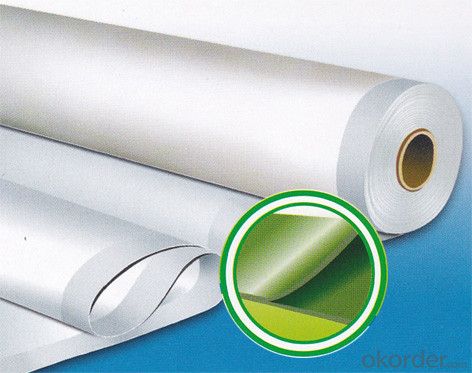
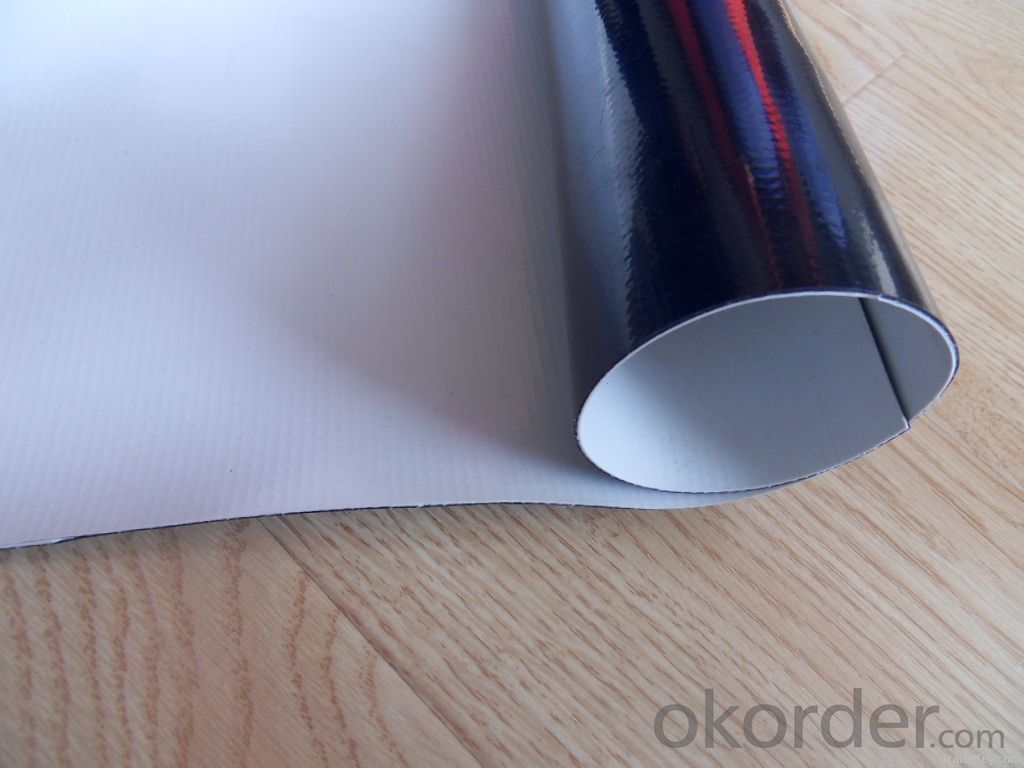
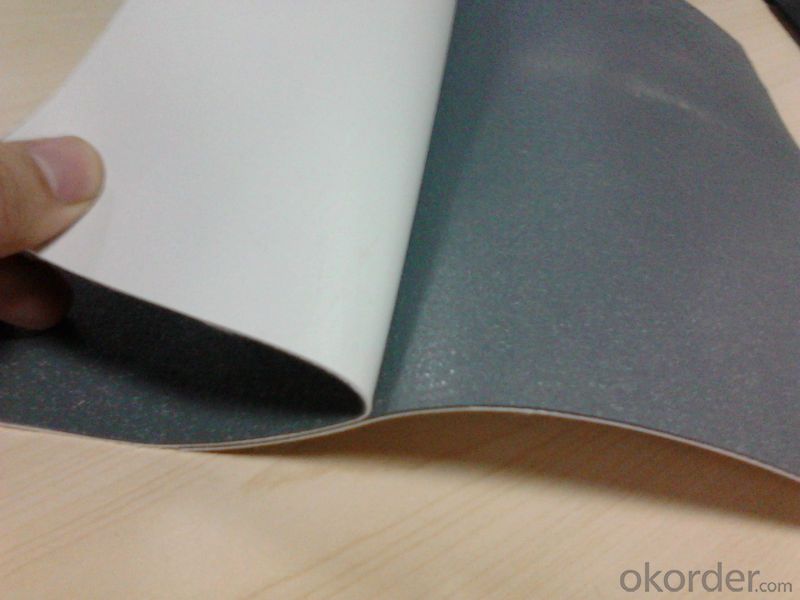
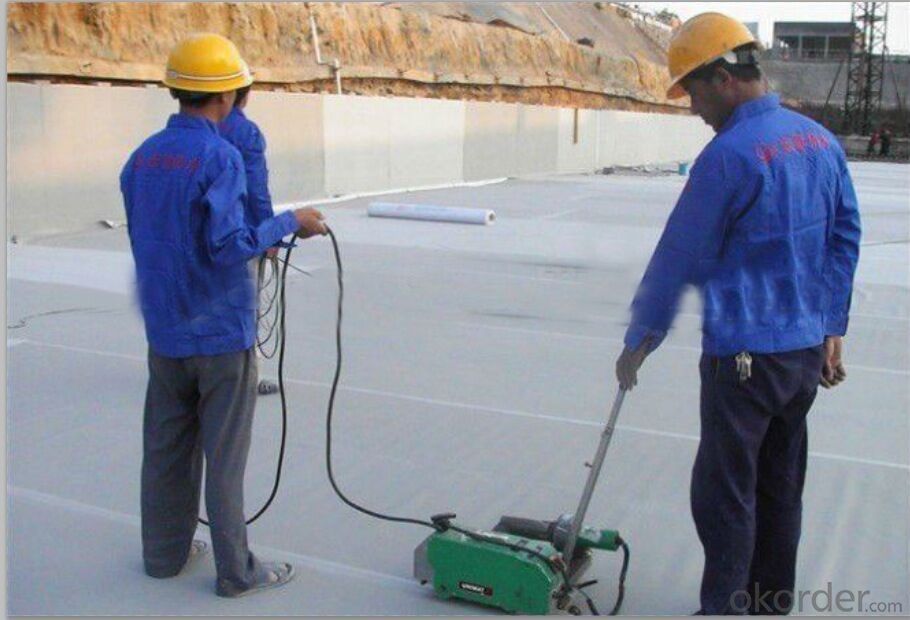
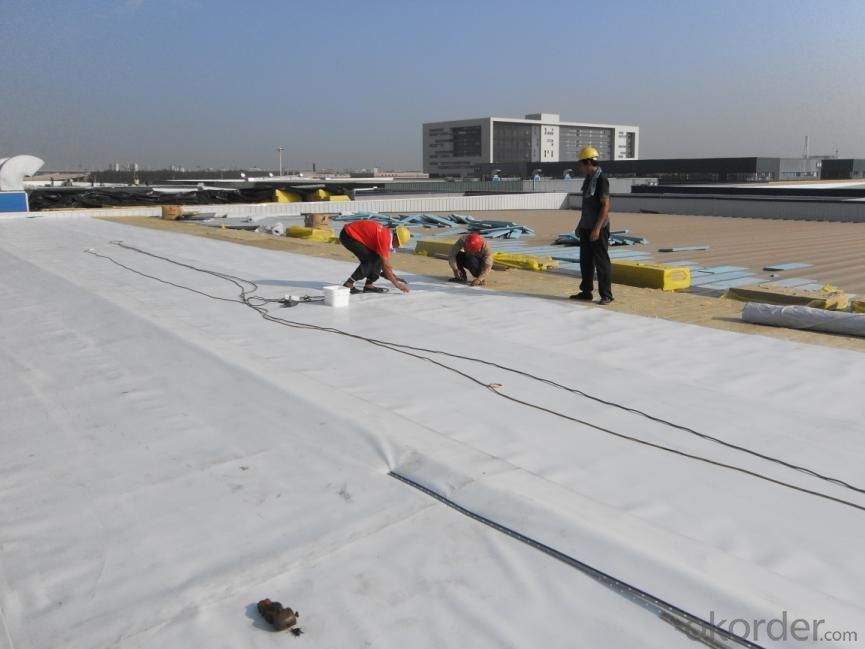
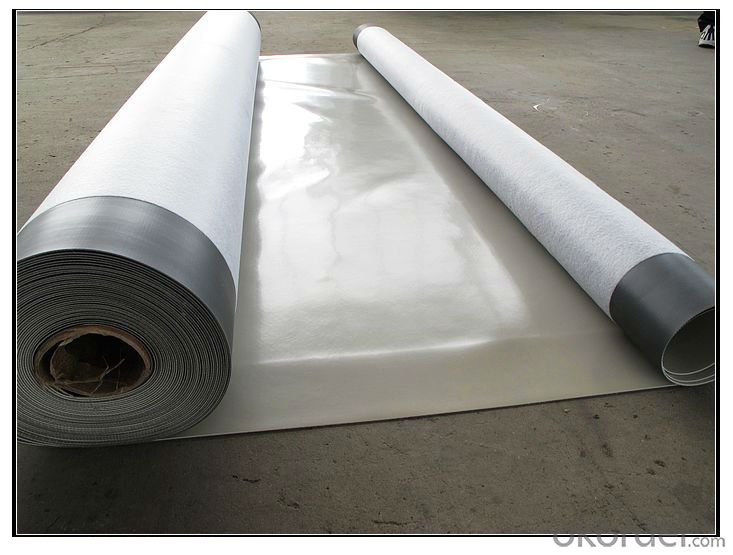
FAQ:
1. Can you produce 4m width?
Yes, no problem for us. We have four bases in China, largest one in this field.
2. How many quantity in one 20'' container for 1.2mm and 1.5mm?
480rolls, 11520m2 for 1.2mm and 400rolls, 9600m2 for 1.5mm
3. Can you provide free samples?
Yes, our samples are free, but express fees usually on buyer's account.
- Q: Are waterproofing membranes resistant to fire?
- No, waterproofing membranes are not inherently resistant to fire.
- Q: Can a waterproofing membrane be used in areas with high levels of salt or saltwater exposure?
- Yes, a waterproofing membrane can be used in areas with high levels of salt or saltwater exposure. Waterproofing membranes are designed to provide a protective barrier against moisture, including saltwater. They are often used in coastal regions, marine environments, or areas with high salt content in the soil to prevent water damage and corrosion.
- Q: Can a waterproofing membrane be used in areas with heavy foot traffic?
- Yes, a waterproofing membrane can be used in areas with heavy foot traffic. Waterproofing membranes are designed to create a protective barrier against moisture and can withstand the wear and tear caused by foot traffic. However, it is important to choose a high-quality and durable membrane that is specifically designed for heavy foot traffic areas to ensure long-lasting performance.
- Q: Can a waterproofing membrane be used in conjunction with fire protection systems?
- Yes, a waterproofing membrane can be used in conjunction with fire protection systems. While the main purpose of a waterproofing membrane is to prevent water penetration, it can also provide an added layer of protection against fire hazards. Many waterproofing membranes are designed to be fire resistant or have fire-retardant properties. This means that they can help to delay the spread of fire and minimize its impact on the structure. Additionally, some waterproofing membranes are specifically designed for use in fire protection systems, such as fire-rated roof membranes or fire-resistant sealants. These specialized membranes can effectively seal off potential fire pathways and provide a barrier to protect the underlying structure. Overall, using a waterproofing membrane in conjunction with fire protection systems can enhance the overall safety and security of a building.
- Q: Can a waterproofing membrane be used for medical facilities?
- Yes, a waterproofing membrane can be used for medical facilities. Waterproofing membranes are commonly used in construction to prevent water ingress and protect buildings from moisture damage. In medical facilities, where cleanliness and hygiene are crucial, waterproofing membranes can be used to create a moisture barrier, preventing water and moisture from seeping into walls and floors, which can lead to mold growth or damage to sensitive medical equipment. Additionally, waterproofing membranes can aid in maintaining a sterile environment by preventing the growth of bacteria or other pathogens that could be present in damp conditions.
- Q: Can a waterproofing membrane be used for data centers?
- Yes, a waterproofing membrane can be used for data centers. Waterproofing membranes are commonly used in construction to prevent water intrusion and leakage. In data centers, where protection against water damage is crucial for sensitive equipment and infrastructure, a waterproofing membrane can provide an additional layer of protection to safeguard against potential water leaks or flooding.
- Q: Can a waterproofing membrane be used for parking garages?
- Yes, a waterproofing membrane can be used for parking garages. A waterproofing membrane is a protective layer that is applied on surfaces to prevent water penetration. In parking garages, it is essential to have effective waterproofing to protect the structure from water damage, such as corrosion of steel reinforcement and deterioration of concrete. Parking garages are exposed to various sources of water, including rain, snow, and vehicle fluids, which can seep through cracks and joints. A waterproofing membrane acts as a barrier, preventing water from infiltrating the structure and causing damage. There are different types of waterproofing membranes available for parking garages, including sheet membranes, liquid-applied membranes, and cementitious coatings. These membranes can be applied on horizontal and vertical surfaces, such as floors, walls, and ramps, to create a watertight seal. When selecting a waterproofing membrane for a parking garage, factors such as durability, flexibility, and resistance to chemicals should be considered. The membrane should be able to withstand the heavy loads and traffic conditions typically found in parking garages. Overall, using a waterproofing membrane in parking garages is crucial to protect the structure and extend its lifespan by preventing water-related damage. It helps maintain the structural integrity and aesthetics of the garage while ensuring a safe and functional environment for users.
- Q: Are waterproofing membranes suitable for bridge abutments?
- Bridge abutments, the structures supporting the ends of a bridge, can benefit from the use of waterproofing membranes. Given their exposure to moisture and water, it is crucial to protect these structures. Waterproofing membranes serve as an effective barrier against water and moisture intrusion, making them an excellent solution for bridge abutments. These membranes, typically composed of materials like bitumen, PVC, or EPDM, possess high resistance to water penetration. Moreover, they offer additional protection against factors such as UV rays, chemicals, and temperature changes. By installing waterproofing membranes on bridge abutments, the risk of water damage, deterioration, and corrosion can be significantly reduced. Consequently, the bridge structure's durability and longevity are enhanced.
- Q: How do waterproofing membranes adhere to surfaces?
- Waterproofing membranes adhere to surfaces through the use of adhesive materials, such as modified bitumen or synthetic rubber compounds, which are applied to the surface and bond with it. The adhesive properties of these membranes allow them to create a tight and seamless seal, preventing water penetration and ensuring long-lasting waterproofing protection.
- Q: Are there any limitations to using a waterproofing membrane?
- Yes, there are some limitations to using a waterproofing membrane. One limitation is that the membrane can be punctured or damaged during installation, which can compromise its effectiveness. Additionally, waterproofing membranes may not be suitable for all types of surfaces or structures, and certain conditions such as extreme temperatures or excessive movement can affect their performance. Moreover, the lifespan of a waterproofing membrane can vary depending on factors like maintenance, exposure to UV rays, and overall wear and tear.
Send your message to us
PVC Waterproofing Menbrane for Roofing Construction
- Loading Port:
- Shanghai
- Payment Terms:
- TT OR LC
- Min Order Qty:
- 20000 m²
- Supply Capability:
- 5000000 m²/month
OKorder Service Pledge
OKorder Financial Service
Similar products
Hot products
Hot Searches
Related keywords
